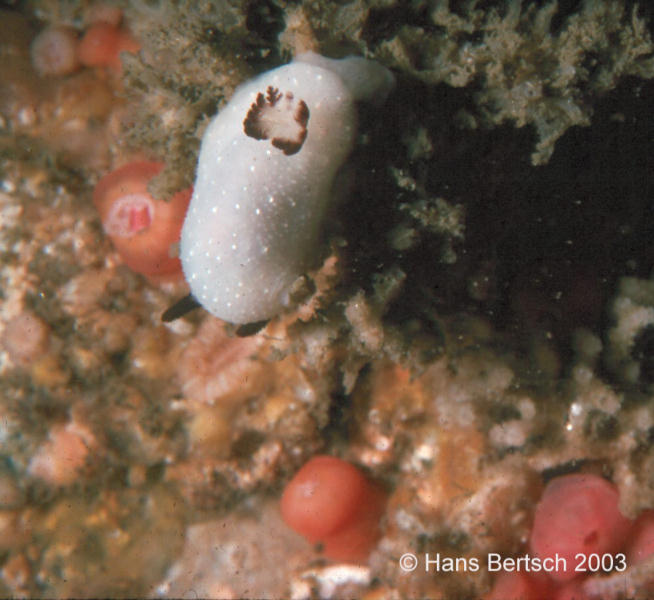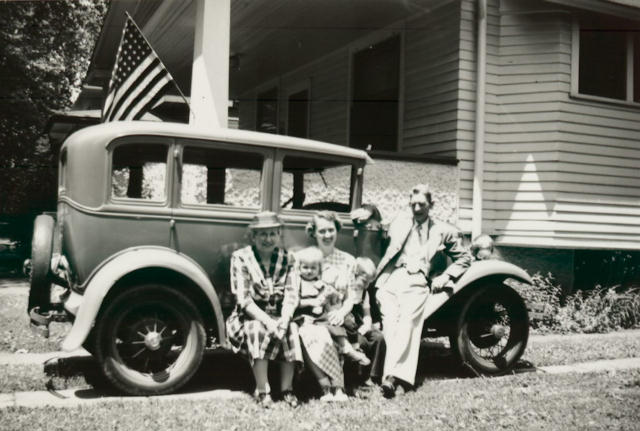 |
Cadlina limbaughorum
Photo courtesy of Dr. Hans Bertsch
Cadlina limbaughorum Lance, 1962
This is a most distinctive and beautiful species of cadlinid nudibranch, which James Lance named in honor of Conrad and Nan Limbaugh. The history of Conrad Limbaugh, his affiliation with Scripps Institution of Oceanography, and his contribution to the history of scuba diving safety and instruction in southern California (I should amend that: worldwide) was amply documented by Dave Behrens in the BOW # 316 (published on the Slug Site a little more than a year ago). When first described by James Lance, he stated its occurrence was "subtidal, 50 to 140 feet; unknown from the intertidal." My data seem to reinforce that statement, since all specimens I have illustrated were seen between 55-90 feet depth.
So here we have a "revisited" BOW, not with all that much new information, but with the first published scanning electron micrographs of its radula.
Cadlina limbaughorum is a very distinctive species, although some might at first sight confuse it with Cadlina flavomaculata (the species I discussed last week). Both species have black rhinophores and white bodies, but C. limbaughorum also has black gills; it has whitish subdermal spots. In contrast, C. flavomaculata has whitish gills, and yellowish (subdermal) spots.
Look closely! There is a subtle, but quite distinct difference. The introductory photograph of Cadlina limbaughorum is the specimen from which was extracted the radula and on which the scanning electronic micrographs were made. Collecting data: 19 mm total length of animal; 25 November 1978, off Three Pole Reef, San Diego (Point Loma region), 90 feet depth.
Now, onto its radula (remember, this was dissected from the specimen illustrated at the beginning of this week's BOW; collected 25 November 1978). The radula is one of the most marvelously evolved structures in the animal kingdom. It can separate genera (for instance, Hopkinsia is its own genus based on its unique tooth structure—all the mathematics in the world do not put it into Okenia !) One must think in terms of evolutionary uniqueness and "parallelism" or lack thereof (as Terry Gosliner so exquisitely described years ago) to understand relationships between animals (or plants, fungi, archaebacteria, eubacteria, protozoa, or even viri—do I mean viruses????)
The radular formula of this species was given by Lance (1962), and repeated in McDonald (1983) and Behrens (1991); his illustrations are also repeated in McDonald (1983) and Behrens (1992), so these scanning electron micrographs are the first illustrations of the radula of this species since its original description. Lance (1962) stated than "an individual 27 mm in length had the dental formula of 102 x 44-1-44." The radula I illustrate has approximately 90-91 rows of teeth, and 50-51 teeth in each half-row, well within the parameters of intraspecific variation (Bertsch, 1976).
The first picture shows the entire radula, unfortunately split because of the difficulties of putting a three-dimensional functional structure onto a 2-dimensional glass slide that will go into the porthole of the SEM. Magnifications are approximate, because of going from the original Polaroid image, to a slide, and to this format. But imagine this picture on a typical 35 mm slide: the magnification would be approximately 8x.
Moving into the teeth—middle of a half-row, shows the teeth up close approximately 80 x (again—the reference is a 35 mm slide that the picture would be).
This is a close-up of the middle-lateral teeth; note the typical small cadlinid denticles on the upright cusp (terminology based on Bertsch, 1977). Obviously, Alan Grant, the diving dentist, would tell you it needs to floss or brush more frequently....
The
rachidian tooth is shown at an approximate magnification of 435 x when viewed on a 35 mm slide.
LITERATURE CITED
Behrens, David W. 1991. Pacific coast nudibranchs, second edition. Sea Challengers, Monterey, 107 pp.
Behrens, David W. 1992. Pacific coast nudibranchs. Supplement I: Radula. Sea Challengers, Monterey, 11 pp.
Bertsch, Hans. 1976. Intraspecific and ontogenetic radular variation in opisthobranch systematics (Mollusca: Gastropoda). Systematic Zoology 25 (2): 117-122.
Bertsch, Hans. 1977. The Chromodoridinae nudibranchs from the Pacif ic coast of America. – Part I. Investigative methods and supra-specific taxonomy. The Veliger 20 (2): 107-118.
Lance, James R. 1962. Two new opisthobranch mollusks from southern California. The Veliger 4 (3): 155-159.
McDonald, Gary R. 1983. A review of the nudibranchs of the California coast. Malacologia 24 (1-2): 114-276.
192 Imperial Beach Blvd. #A
Imperial Beach, Calif
Jun. 2003
Taxonomic Information and Photos Courtesy of Dr. Hans Bertsch
College of Oceaneering, 3580 Aero Court, San Diego, CA 92123

You can drop Hans a note at hansmarvida@cox.net
|
